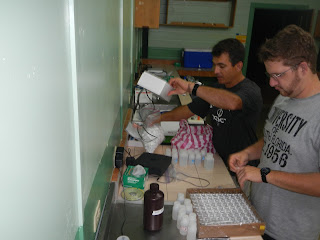Well... the expedition is over and we are all struggling to get back to our usual day-to-day routines. The marvelous memories of this venture are forever cinched to my heart and, in places, to my skin! I thank all of you who made this possible either in the background, or on-site. My most sincere thanks go to Dr. Heather Judkins for her 200% effort to ensure this expedition was a success! It was certainly a pleasure and fun to collaborate with you! Also, my most sincere thanks to the entire USFSP Study Abroad Program and Fiscal Staff (especially Wendy Baker, Mai Huynh and Jason Morris), for taking care of all student program coordination and financial details. You folks ROCKED!
I also would like to thank USFSP College of Arts and Sciences Dean Frank Biafora, Chancellor's office (especially Dr. Norine Noonan), and the Biology Department (especially Dr. Debby Cassill and Dr. Melanie Whitmore) for believing in the vision and mission of this expedition and for facilitating its realization.
Also, special thanks to USFSP Bookstore for providing USFSP t-shirts to all students. The t-shirts were worn well and often ;) ! Muchas gracias to all of the Turrialba Lodge staff (Don Tony Lachner, Don Fausto, Macho, and las muchachas), Organization for Tropical Studies (Kenneth Alfaro), and Smithsonian Tropical Research Institute staff (Dra. Nelida Gomez and Gabriel Jacome). Lastly, I would like to thank my wonderful mother (Sra. Matilde Mendez) and the rest of her Habitat for Humanity staff for providing us with an unforgettable experience!
Feeling Blessed
Dr. Herzfeld













































